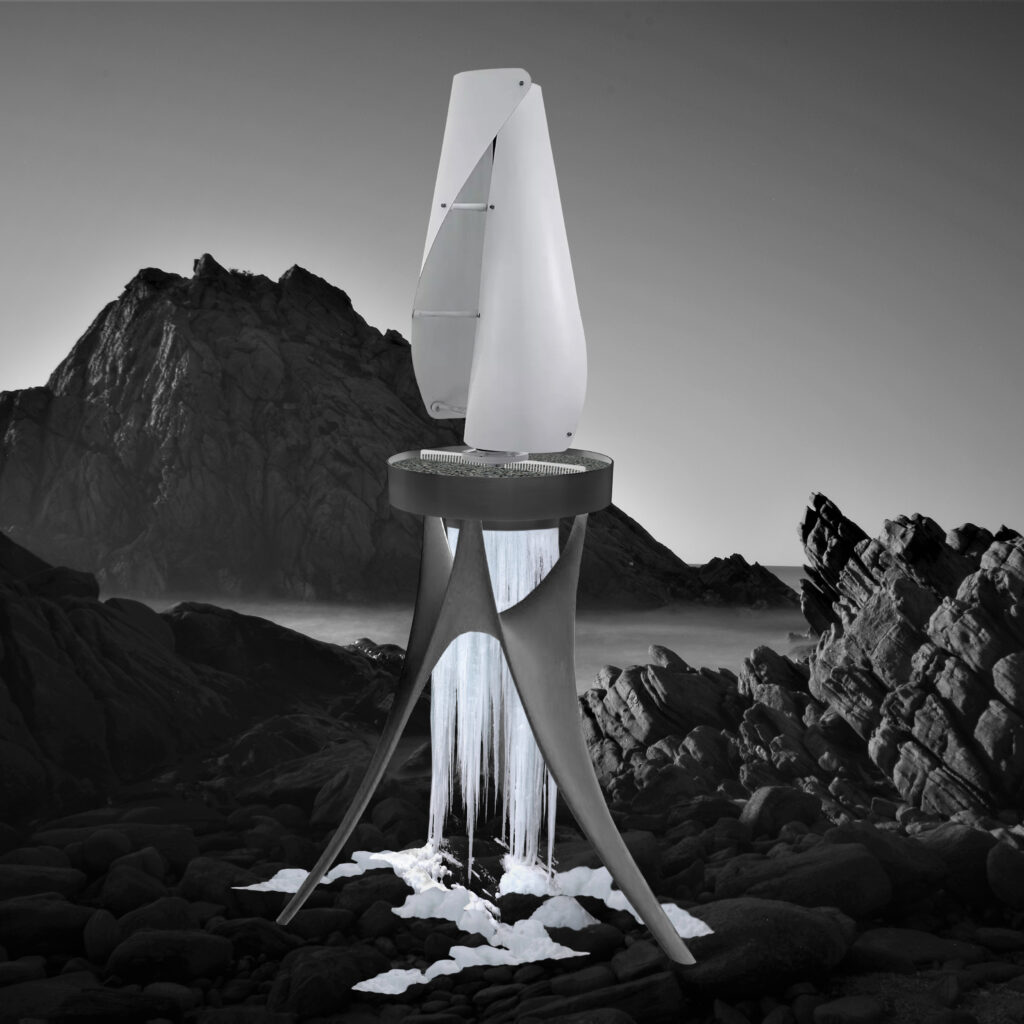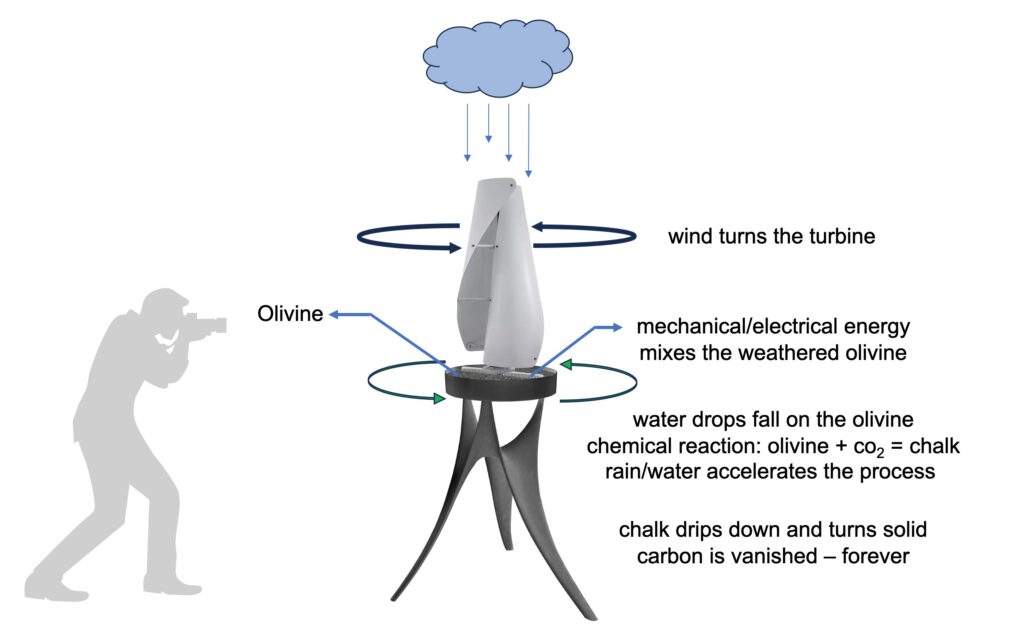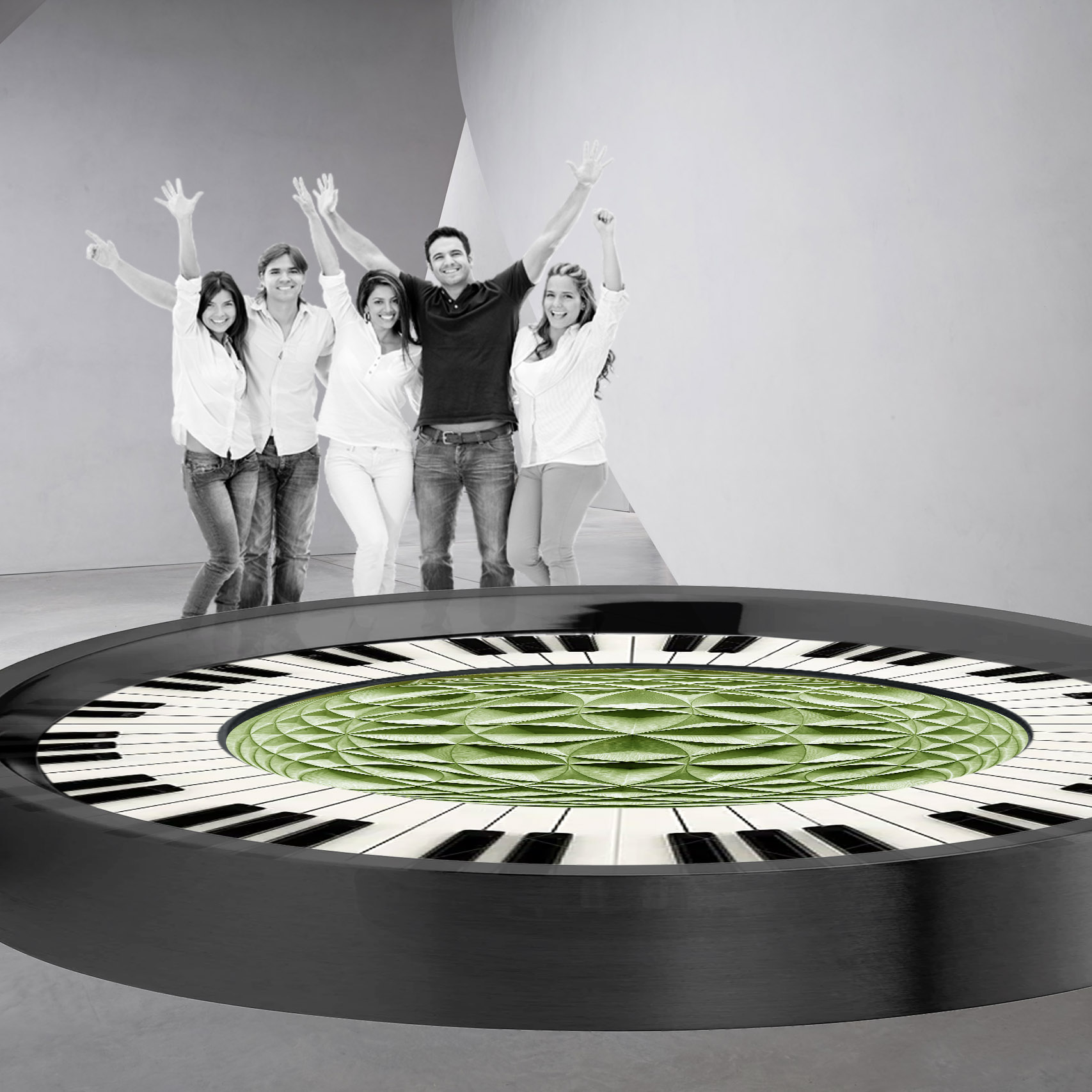The CaVa sculpture
Tackling the world’s biggest problem with art and music. You read that right: artist Ap Verheggen together with team CarbonVanish managed to use music to destroy CO2 from the air. Each tone generates a new pattern in the “specially treated” water, but also in the olivine sand. CO2 from the outside air is sucked in and converts the olivine sand into harmless chalk: forever. The artwork has become an icon of our time: art can find new solutions to the world’s biggest problems. To emphasize this, the artwork is only presented in an iconic art setting to be determined.
The principle of this artwork has been extensively tested by reknowned scientist Bob Hoogendoorn PhD, member of the CarbonVanish team and has led to the discovery of groundbreaking innovations that enables large-scale and energy-efficient breakdown of atmospheric CO2.This groundbreaking concept is now patent pending.
Janieck Devy (Reality) and Bas van Wageningen (DI-RECT) support the project with groundbraking music. The music under the video clip was composed by Edo Kars. Video by Hessel Waalewijn.


Wind & Music as accelerator
When olivine grains come into contact with CO2, they are converted into a kind of chalk. This lime seals off the little stone and needs to be repeatedly cleaned to convert new CO2. The easiest way is to let the stones rub against each other. This process requires movement, which is generated in the accompanying model from wind energy, although musical notes can also accomplish the same. What could be more beautiful than saving the world with music?
See the idea below.
ArtScience Designs
Artist Ap Verheggen feels responsible to explore solutions from an artistic viewpoint for the CO2 issue. The current scientific solutions aren’t enough, and we need many new ideas for prompt action. While reducing CO2 emissions is crucial to slow down global warming, it might take a thousand years before we see significant changes. Verheggen believes it’s worth trying to speed up this process. Art offers a great way to create, refine, and test innovative perspectives. The examples presented are not the world’s solution, but initial ideas to be tested, aiming to stretch boundaries. Verheggen compares this approach to a tree with many branches: there are various paths, but making the right choices from the base is essential to reach the top safely.

It's important to give creative input to world's most pressing challenges



Idea:
The Chladni Sculpture
When a note is played, the olivine sand begins to vibrate until a beautiful pattern emerges. This phenomenon is called the Chladni effect. In this way, the process of converting CO2 into lime is greatly accelerated. It’s wonderful that with music, one can contribute to slowing down global warming.
